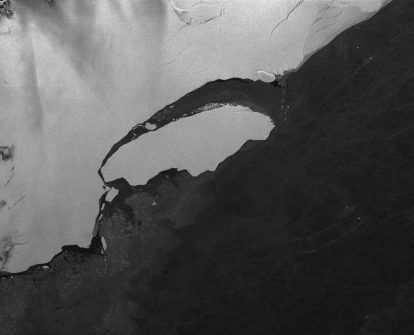
In Antarctica, massive icebergs are a consequence of calving, where blocks of ice detach from the continent’s ice shelf. The calving of these massive icebergs is a rare occurrence with unpredictable variability, making it a difficult process to understand and statistically model.
Here, we study calving using a statistical method called extreme value theory (EVT), which is specifically designed to model the nature of extreme events. We use EVT to statistically analyze the largest Antarctic calving events over the past 47 years using satellite observations.
Our results show that the risk of experiencing a major calving event has not increased over the last 47 years, which suggests that climate change is not necessarily responsible for the calving of these large icebergs. However, it is statistically possible that Antarctica could generate bigger icebergs than any previously recorded.
The methods used in this study could be combined with other data sets or physical information to enhance calving models that scientists use to make predictions about ice shelves.
Read the paper
MacKie, E. J., Millstein, J., & Serafin, K. A. (2024). 47 Years of Large Antarctic Calving Events: Insights From Extreme Value Theory. Geophysical Research Letters, 51(23), e2024GL112235.
Stories published
- American Geophysical Union’s EOS Research Spotlight: Massive Antarctic Icebergs May Calve at Random
- UF College of Liberal Arts and Sciences: Antarctic ice sheet faces “death by a thousand cuts”